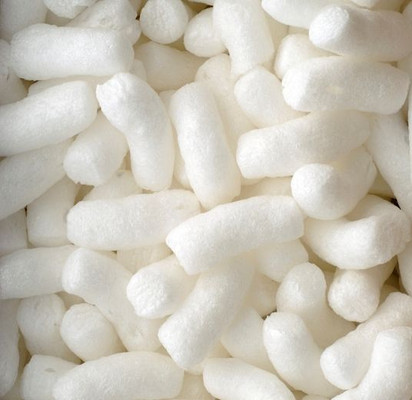The Disappearing Myth
Posted on Nov 10th 2020
The Truth About Biodegradable Packaging Myths | EcoEnclose
We often hear from manufacturers of new packaging technologies - such as 100% compostable mailers, mushroom-based packaging, corn-based foam providers, and new plastic additives.
There are a lot of merits to some of these packaging innovations, particularly those that are a direct alternative for virgin plastic packaging. But, we often find that this hopeful claim that items simply "go away" - in a compost or down a sink - is misleading and short sighted.
Manufacturers, businesses and end consumers are quick to recognize the end of life challenges associated with landfilling and recycling, but tend to promote "composting" or "biodegrading" as a pure end state, with no impact after biodegradation occurs.
Unfortunately, this is not true. When any material biodegrades or dissolves, it doesn't "go away," it leaves some impact on the soil and/or water behind.
In the case of food or yard waste, what is left behind is great for compost, adding vital nutrients that will strengthen soil.
In the case of many packaging innovations, what is left behind in the soil or water is not nutrient rich. At best, the materials can be net neutral. But more typically, bio-plastic packaging leaves behind contaminants, heavy metals and other elements that aren't necessarily what we want in our soils and waterways.
Just as we consider what happens to a material after we throw it in the trash or recycling bin, it is imperative that we bring the same mindset to compostable or dissolving items - recognizing that they don't disappear, and their full end of life outcomes must be considered.
Here's a non-packaging example we all know well - salt.
Salt dissolves. It seems fairly harmless. Many tout the benefits of salt for weed prevention. But, would you dump a bucket of salt in your compost or garden?
Most gardeners would give an emphatic "no." High salinity is a known problem for gardeners. When soil has too much salt it becomes permeable. Plant roots do not absorb the water they need, and often die, wilt or fail to flourish.
Despite the fact that salt is a mineral that is technically compostable and dissolves in water, its impact clearly stays behind long before it can no longer be seen.
A packaging example - corn starch Styrofoam.
Corn starch foam is becoming an increasingly popular alternative to traditional Styrofoam. It is made with 90% cornstarch polymer and 10% additives and functionally operates the same way Styrofoam does.
At the end of its useful life, this cornstarch foam can be composted or dissolved in water.
The idea of a compostable Styrofoam (or perhaps even better, a Styrofoam you can dissolve in your kitchen sink) is incredibly appealing. But, what happens afterwards? More research must be conducted, but at first blush, there are several concerns.
Compost: Corn starch foam leaves heavy metals in soil, including Arsenic, Cadmium, Calcium, Cobalt, Iron, Selenium. While a small volume of this material leaves only trace amounts, it is important to consider the implications of the material being composted at scale. The resulting compost would not be usable as an agricultural amendment, would become a much less valuable output, and would become problematic if it were applied broadly to our soil.
Water: When corn starch foam is dissolved in water, it introduces heavy metals into the waste water stream and tiny organic molecules (much smaller than typical organic matter that goes into waste water). Ideally, the organic remnants of the foam can be filtered out during waste water treatment, after which they are generally landfilled (sometimes composted). Alternatively, the organic remnants could go through the wastewater treatment facility's filtering steps and become part of waterways and water sources. Again, if corn starch foam were used at scale, the resulting impact on bodies of water could pose a real challenge as these organic molecules encourage algae bloom and add heavy metals to our water.
This rationale does not even consider the other downsides of corn-based packaging including the impact of corn production on our soil and water pollution.
This is not to say that corn starch based foam is all bad. For a company currently using Styrofoam, it poses a lot of benefits and merits. And, we recognize that every packaging solution has its pros and cons.
This blog post is simply meant to emphasize how important it is that you don't fall into the trap of thinking that compostable or water-soluble means the packaging has "gone away," causing no harm at all.


